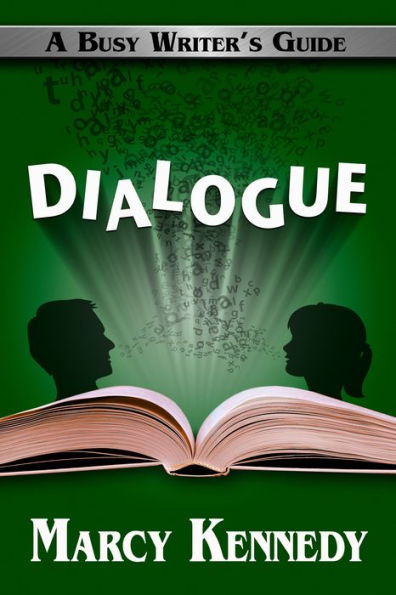Every writer knows the benefits strong dialogue can bring to a story—a faster pace, greater believability, increased tension, and even humor.
But not every writer knows how to achieve it.
And, unfortunately, weak dialogue can destroy a story even faster than strong dialogue can improve it. Weak dialogue can drag the pace to a halt, make your characters feel stilted, and confuse your readers.
In other words, to write great fiction, you need to know how to write dialogue that shines.
In Dialogue: A Busy Writer’s Guide, writing instructor and fiction editor Marcy Kennedy shows you how to get it. Inside you’ll learn…
- how to format your dialogue to keep it clear and easy to follow,
- tricks to avoid the dreaded As-You-Know-Bob Syndrome,
- how to use dialogue to manage your pace, increase tension, and bring your characters to life,
- the secrets to dealing with dialogue challenges such as dialect, starting a chapter with dialogue, and using contractions in historical fiction and fantasy, and
- much more.
Each book in the Busy Writer’s Guides series is intended to give you enough theory so that you can understand why things work and why they don’t, but also enough examples to see how that theory looks in practice. In addition, they provide tips and exercises to help you take it to the pages of your own story with an editor's-eye view.
Other Books in the Busy Writer's Guide Series:
Showing and Telling in Fiction
Internal Dialogue
Point of View in Fiction
Grammar for Fiction Writers
Every writer knows the benefits strong dialogue can bring to a story—a faster pace, greater believability, increased tension, and even humor.
But not every writer knows how to achieve it.
And, unfortunately, weak dialogue can destroy a story even faster than strong dialogue can improve it. Weak dialogue can drag the pace to a halt, make your characters feel stilted, and confuse your readers.
In other words, to write great fiction, you need to know how to write dialogue that shines.
In Dialogue: A Busy Writer’s Guide, writing instructor and fiction editor Marcy Kennedy shows you how to get it. Inside you’ll learn…
- how to format your dialogue to keep it clear and easy to follow,
- tricks to avoid the dreaded As-You-Know-Bob Syndrome,
- how to use dialogue to manage your pace, increase tension, and bring your characters to life,
- the secrets to dealing with dialogue challenges such as dialect, starting a chapter with dialogue, and using contractions in historical fiction and fantasy, and
- much more.
Each book in the Busy Writer’s Guides series is intended to give you enough theory so that you can understand why things work and why they don’t, but also enough examples to see how that theory looks in practice. In addition, they provide tips and exercises to help you take it to the pages of your own story with an editor's-eye view.
Other Books in the Busy Writer's Guide Series:
Showing and Telling in Fiction
Internal Dialogue
Point of View in Fiction
Grammar for Fiction Writers

Dialogue

Dialogue
Related collections and offers

Product Details
| BN ID: | 2940045476928 |
|---|---|
| Publisher: | Marcy Kennedy |
| Publication date: | 12/01/2013 |
| Series: | Busy Writer's Guides |
| Sold by: | Smashwords |
| Format: | eBook |
| File size: | 2 MB |
